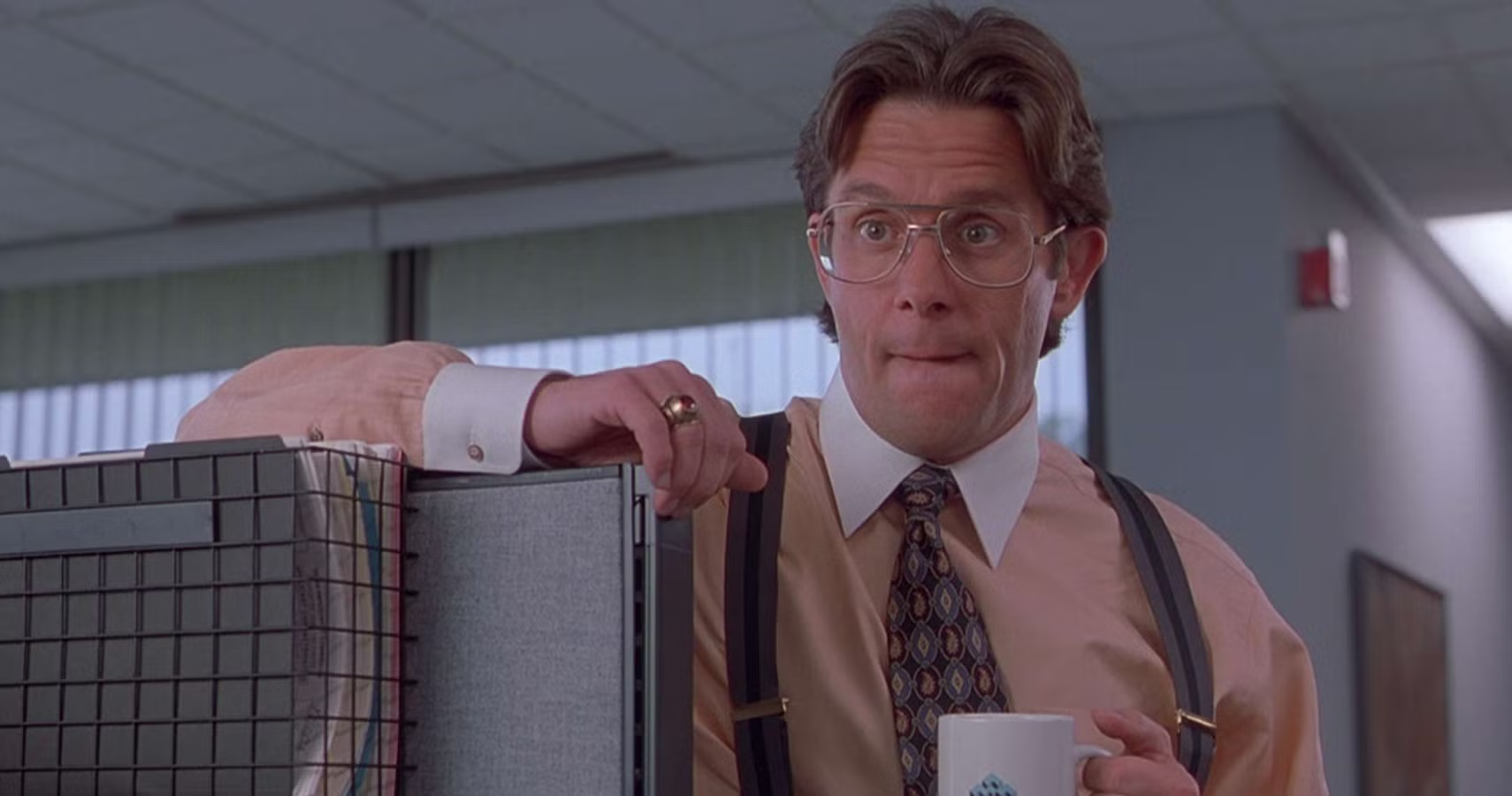There is a famous scene from the film Office Space where the main protagonist, Peter (a man who despises his job), sits down with the consultants, both named Bob, to tell them about his day at work. Peter goes on to describe how suffocating and insignificant his job feels. But he says it with a great sense of relief, as he has already detached himself from it and among other things says:
“It’s not that I’m lazy. It’s that I just don’t care.”
To make things even funnier, and more in tune with reality, while Peter is speaking with the Bobs, there’s a massive whiteboard in the background with a drawing and the title: Planning to Plan.
This is a film released in 1999, and more than 25 years later, there’s one obvious question: If they were to remake the film, would the content be any different?
The disappointing answer is probably no. It’s 2025. We have AI. We have Slack. We have apps that track our hydration and meetings that require three platforms to join. Surely, workplace culture has evolved? If anything, the whiteboard just got bigger. And there are more Peters than we can count. How has this happened, and why are people constantly questioning whether they want to stay or leave the workplace, all while feeling the same sense of resentment towards their jobs?
The detection of the problem
We are living in a time that moves fast, bringing new technology. Things have changed a lot, yet not as much as we think. You still hear the same stories about soul-crushing jobs, toxic environments, endless meetings, and yes, projects that resemble the whiteboard Planning to Plan. These are now managed in tools like Jira (and others), but the feeling remains unchanged: organisations haven’t progressed as much as we’d like to believe.
Yes, there are more remote jobs than ever, but even those are filled with illogical requests and poor leadership. In many ways, it doesn’t matter where you sit in the world, whether in an office or not – organisations have failed spectacularly in creating a soulful place for work.
But now the question is: how many organisations are willing to change in order to ensure people don’t hate every minute of their job? Work has become something grander than just work; it has spread and evolved, and it’s no longer as simple as it once was. Perhaps the main starting point should be this: to simplify the meaning of work on a personal level first, and then on an organisational level.
What do you expect from your job?
If you were to sit down with someone who had a job 100 years ago, it might be difficult to explain how work today is no longer just about putting food on the table or paying the bills. Jobs have become deeply tied to people’s identities and are often perceived as more important than anything else.
If you have ever lost yourself in a job, giving 200%, sacrificing your team, your health, your friendships, and your personal relationships, you’ll understand just how attached someone can become to something that, in the end, is still just a job. That doesn’t mean jobs lack meaning; quite the opposite. We’re no longer in an era of pure labour. Many jobs carry a kind of soul, or at the very least, each role offers opportunities to pour a bit of your own into it, no matter how mundane the work might seem.
But we also have a responsibility to draw the line and separate ourselves from the meaning we assign to our work. It’s a part of our lives, but it isn’t the whole story. And in that balance lies part of the cure for the frustration that quietly urges you to walk away.
The accountability that lies within an organisation
If, as an individual, you come to the realisation of how much space a job should occupy in your life and learn to see it as just one piece rather than the whole story, then it is time to acknowledge the other culprit in this narrative: the workplace.
A workplace is not just a location; it is something built. It is a culture, a setting, a way of working, a deliberately designed system. Just as an individual holds responsibility for being a good worker while also learning to nurture the other parts of their life, the company carries its own accountability. It must make working hours not merely bearable, but genuinely pleasant.
At times, this can sound like a fairytale, as if it is one of the most difficult problems to solve. But the truth is, it is not. And that makes it all the more tragic. The people who design these systems hold the power to shape what the workplace looks and feels like. Choosing the right leaders is their responsibility.
The cost of choosing the wrong ones is paid by everyone, but especially by those who must work under them. This is how toxic, chaotic workplaces are created, through poor leadership and misaligned values.
It all begins with choosing the right values, and from there, choosing the right leaders to uphold them.
Two Sides of the Equation
If, on one side of the equation, we take personal responsibility to separate our full identity from our job, so it doesn’t become entangled with past trauma or define our entire sense of worth, then on the other side, the organisation must take responsibility for creating a healthy system.
It’s the company’s role to build a workplace where, if the Bobs come to ask you about your day, you actually have the energy to respond. Not just to nod politely or go through the motions, but to be honest—without it costing you your sanity, your job, or your sense of self.
Both sides are needed. Without that balance, the question “Should I stay, or should I go?” becomes the default mindset in far too many jobs.

